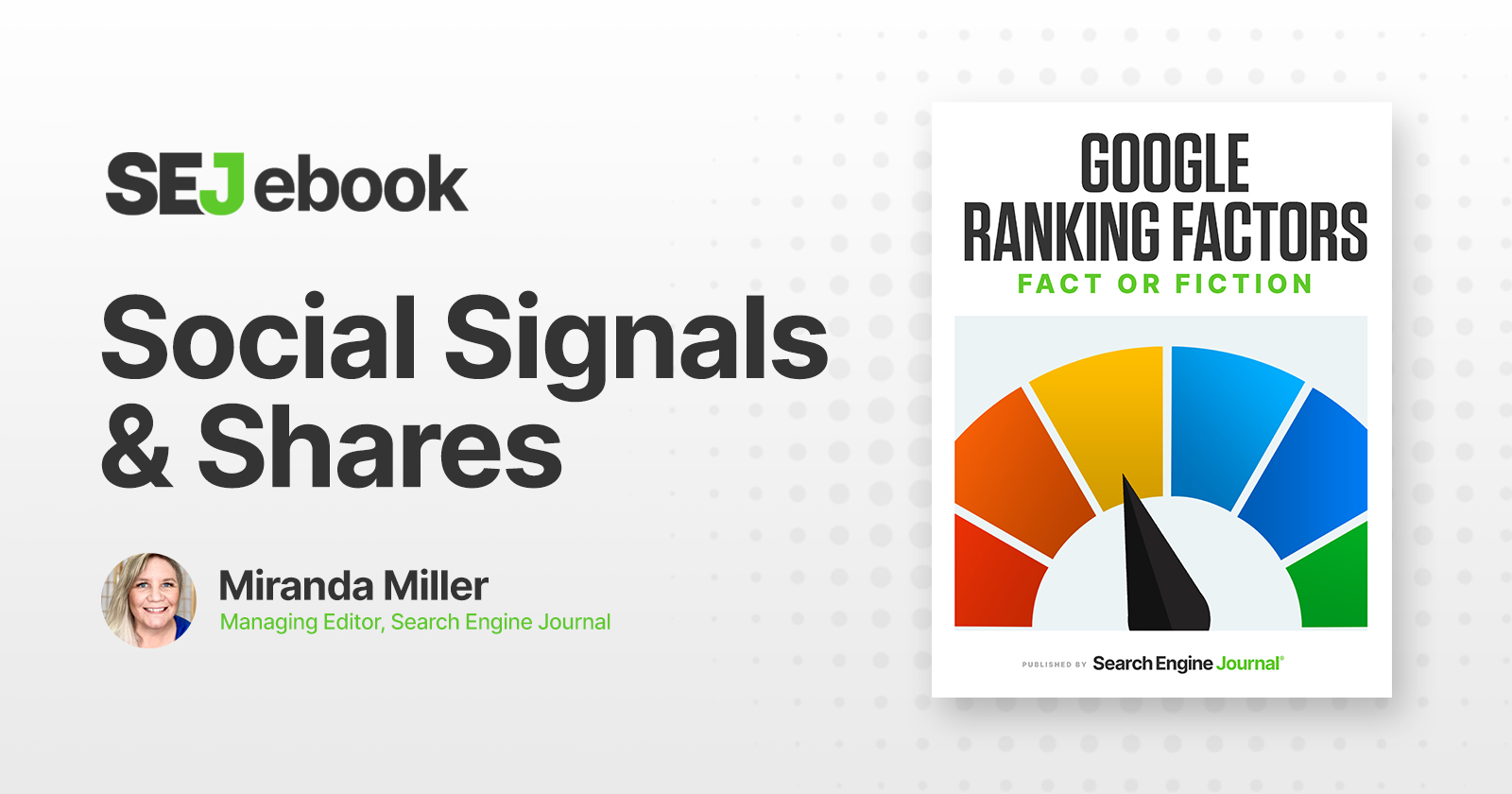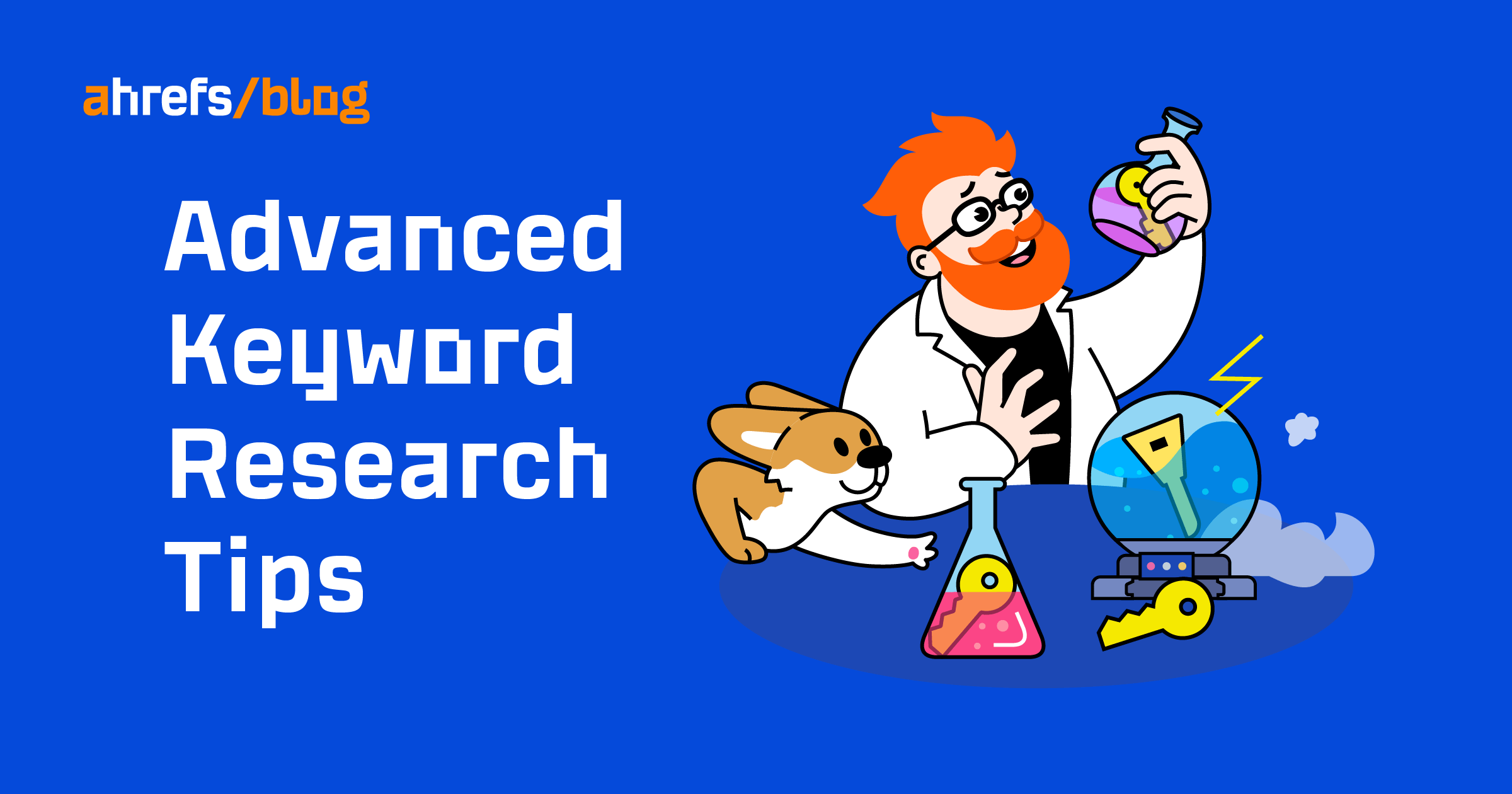The 49 Best Google Tools For Productivity & Marketing via @sejournal, @theshelleywalsh
Google has a wide range of tools businesses of any size can use to boost productivity, maximize marketing spend and drive more sales. The post The 49 Best Google Tools For Productivity & Marketing appeared first on Search Engine...

Google might be a dominant search engine worldwide, but over the years, it has also experimented with many products and Google tools that make our lives easier.
The very first Google tool was Adwords, launched on October 23, 2000. At the time, we couldn’t anticipate how much it would change the direction of commerce and how people advertise online.
Google Maps launched in 2005, and probably the biggest of all Google tools, Google Docs, launched in March 2006.
Gemini is the latest Google tool that is having a considerable impact on the world.
Google is also keen to deprecate products and has sunsetted many different tools that have either become obsolete or not had enough users to make them worthwhile.
The most noteworthy of these are Google +, Google Reader, and the free edition of G Suite (the precursor to Workspace).
There are currently hundreds of Google tools covering a wide range of functions, and we have compiled a list of the 49 most useful for anyone working in SEO or marketing.
The Best Google Tools For Marketing And Productivity
1. Google AdMob
Used for conveniently adding ads to mobile apps. Launched in 2006 (acquired by Google in 2010).For developers creating apps, creating a free version of your game or service can be a great way to attract new users and encourage them to download your app.
But this can mean that your app isn’t generating revenue through an app store.
Google AdMob serves as a tool for you to add targeted ads to your product so you can monetize the app you’re creating without the need for a paywall. You can keep your service free, users can discover new products, and advertisers can reach new audiences.
2. Google Ads
Used for reaching new customers. Launched 2001.Given that there are 5.35 billion unique internet users, one way to access new audiences is through online advertising. Previously known as Google AdWords, this was the first tool that Google released after its search engine.
Google Ads makes it easy to serve your ads to your target audience by integrating with Google search results, YouTube, and its Display Network.
You can also use its targeting capabilities to focus on specific demographics and parameters for effective budget spending. Its streamlined design makes it incredibly easy to navigate while also providing clear analytics data for refinement and automated solutions to maximize your marketing spend.
3. Google AdSense
Used for generating revenue from your content. Launched 2003.For anyone with their own website or channel on YouTube, AdSense allows you to monetize your presence by serving ads to your viewers or visitors.
Google manages this, matching your profile to suitable ads that are relevant to your audience. That way, you generate revenue passively to support your content while advertisers can tap into your audience.
The amount earned depends on the ads themselves; the size available for the ad and the competitiveness of the space will affect the revenue generated.
4. Google Alerts
Used for monitoring mentions of your business or specific terms. Launched 2003.Keeping an eye on how people are talking about you is incredibly useful.
You can set up Google Alerts to notify you when your business is mentioned online. This can allow you to share positive mentions and potentially respond to negativity promptly.
It can also be used to track specific topics so you can be the first to know about new developments and incorporate them into your content. This can save you the manual task of rechecking certain topics to see when new content appears, giving Google the task of tracking it for you automatically.
5. Google Analytics (GA4)
Used for measuring website traffic and app usage. Launched 2020 (Replacing Universal Analytics).Google Analytics gives you an easy way to monitor traffic coming to your website and who’s using your app. It can tell you where they’re coming from, what devices they’re using, what parts of your website or app are most popular, and more.
It’s free to use and provides you with key insights about your customers and their purchasing journey. This can help you to streamline your marketing processes, identify your targets, track campaign metrics, and troubleshoot individual webpages – all from the same dashboard.
This is an essential tool for anyone with an online presence to better understand their impact and how they can optimize elements of it. Without measuring the results of changes you make to your website, you can’t see whether you’re making the right decisions or not.
6. Google Arts and Culture
Used for exploring museums and important artworks online. Launched 2011.In a world where everything is increasingly moving online, Google Arts and Culture has helped to digitize the world of culturally significant artworks and artifacts.
This means that people worldwide can explore the galleries of countries thousands of miles away. Teachers can also use this as a resource for running online or hybrid classes, as well as making use of immersive 3D art gallery tours for digital field trips.
Anyone can make use of the tool, both in and out of the education sector, and it can be a great source of creative inspiration for campaigns or artistic styles when coming up with mood boards.
7. Google Assistant
Used for running voice searches on smart devices. Launched 2016.Google Assistant is a virtual assistant that is present in all modern Android smartphones and many other smart devices, such as Google Home. It allows you to perform voice searches by speaking to your device rather than typing out your query.
This can be especially useful for getting information on the fly and performing other tasks automatically, like reading out recipes or writing a shopping list. If you have a smart home, you can also control it using Google Assistant rather than needing to go into apps to make manual changes.
8. Google Authenticator
Used for establishing extra layers of digital security. Launched 2010.Mutli-factor authentication adds depth to the security of your online presence, requiring more evidence that you are who you appear to be when logging onto a service or profile.
Google Authenticator is software that allows you to implement this with your online profiles, including your Google account, to keep your digital self safe. It generates a six- to eight-digit one-time passcode that’s required to complete your login.
Because it’s kept separate and requires a different device, it can prevent cyber-criminals from gaining access to your account through your username/email and password alone.
If you’re not using Google Authenticator or a similar authentication tool for two-step authentication – or even more detailed log-in procedures – then it’s something you should do as soon as possible to keep yourself safe online.
9. Google BigQuery
Used for interacting and querying large datasets. Launched 2011.If you work with large quantities of data, Google BigQuery is a tool worth knowing about. Fully managed by Google, this petabyte-scale, low-cost, serverless ‘data warehouse’ makes use of the Google Cloud Platform.
Because BigQuery is a fully managed Platform as a Service (PaaS) tool, you don’t need to worry about storage resources or computing power, instead being able to focus on making use of SQL to analyze and draw answers from your data. It’s a fantastic option if you have massive datasets to gather insights from, such as detailed customer data.
It also has automatic backups and version history so you can take tighter control of your data security, while also having the capability to create and run machine learning (ML) models to perform artificial intelligence (AI) tasks.
10. Google Business Messages
Used for having conversations with customers online. Launched 2017 (Originally named Google My Business Messaging).Google Business Messages allows you to interact with your customers through several digital touchpoints, including Google Maps, Google Search, and your own website, either via desktop browser or mobile apps.
This allows customers to ask questions directly to a business, receive answers to frequently asked questions, or show wait times for certain services. Because the information comes directly from the business, this can promote a greater level of trust and authority within the interaction.
This can enhance the level of customer care your business provides, creating a better user experience and potentially helping drive more positive reviews. There’s also a 30-day window for follow-up inquiries so you can retarget customers who didn’t complete a purchase and build stronger bonds with existing customers.
11. Google Business Profile
Used for boosting your business presence in the local area. Launched 2014.Creating a Google Business Profile plays a key role in generating interest within your local area, providing essential information at a glance such as business hours, location, and any links to your website.
Doing so helps increase discoverability on Search and Maps, tying into Google Reviews as well so that people can filter local results by the best-ranked ones. This is especially useful for hospitality businesses, as many people will look to Google for local recommendations in unfamiliar areas.
12. Google Calendar
Used for keeping track of key dates, meetings, and appointments. Launched 2006.Google Calendar has been a key tool within Google’s productivity offering for a long time now. It syncs across your devices to ensure your calendar is always up to date.
While it’s always functioned as a way to mark important dates, there are some useful integrations that can make it a more valuable tool.
With the development of Google Meet, you can use Google Calendar to easily schedule virtual meetings with other people.
If you have access to their Google Calendar, you can use it to find an appropriate time when you’re both free rather than having to go back and forth over email.
13. Google Charts
Used for visualizing data. Launched 2007.If you need to create visually interesting graphs or charts, Google Charts is a popular choice that provides many ready-to-use chart types.
This could be anything from a simple bar graph to chart top-level financial information to internal organization structures or incredibly dense graphs using complex datasets.
If you’ve been using BigQuery to analyze data, you can take that same data and visualize it using Google Charts to visually demonstrate your learnings to others within your business.
JavaScript is the most popular method of bringing these charts together so you can embed interactive charts into your webpage. They’re rendered using HTML5/SVG technology, which means they’re compatible with many browsers and mobile devices.
14. Google Chat
Used for communicating with others. Launched 2017 (Originally named Hangouts Chat).While originally conceived as a business tool for teams to keep in touch with each other, Google Chat is available for everyone to use as instant messaging software.
You can talk to people one-on-one or start larger group messages, like with similar software. It still favors business communication, as it integrates well with Gmail and other tools such as Google Docs, Sheets, or Slides, which all exist within the Google ecosystem.
In the current era of remote and hybrid working, it can be a great option for remote teams who need to collaborate frequently when using these different tools.
15. Google Chrome for Developers
Used for browsing the internet with dedicated developer features. Launched 2008 (Chrome).Google Chrome is one of the most popular web browsers. Its user-friendly interface makes navigating the internet as straightforward as possible, with additional memory and battery features to help make your browsing experience as smooth as possible.
Chrome DevTools is a set of web developer tools that are built directly into the browser itself, giving web devs convenient access to everything they need to edit web pages and perform diagnostic tasks at speed.
Chrome Dev is updated weekly, so you’ll always have access to the most up-to-date browser and toolset. This allows you to develop websites and test new APIs without needing to switch between anything.
16. Google Chrome Remote Desktop
Used for assisting other users with technical issues Launched 2011If you need to access your home or work computer while you’re away from your desk, Google Chrome Remote Desktop allows you to easily connect and get what you need.
As with many Google tools, it’s built using Google’s secure infrastructure so you can trust the connection between your devices. You can do this from another computer or even a mobile device, iOS or Android, so you can track down what you need regardless.
You can also use it to share your screen with co-workers if you need to show them how to do something remotely. If you find yourself doing this often, you can also add the Google Chrome extension to make it even easier to use.
17. Google Digital Garage
Used for gaining new digital skills and qualifications. Launched 2015.If you have a digital skills gap you want to close, then Google Digital Garage may be able to find you a free training course.
There is a wide variety of online courses and sessions available to reserve a place, from learning about machine learning and AI to digital well-being training and diversity training.
You can also gain Google Career Certificates in certain topics earned through completing Google’s online training programs.
These are aimed at in-demand industries, such as UX design and data analytics, so you can add these skills to your digital toolbox. While these aren’t necessarily free courses, they can be low-cost options for getting accredited training from Google.
18. Google Docs
Used for online word processing and writing tasks. Launched 2006.Part of the G Suite of digital tools, Google Docs is an easy-to-use free online word processor. Its straightforward interface will be familiar to anyone who’s used Microsoft Word before, and it offers some useful additional features.
Collaboration is built into the tool, allowing you to easily share documents via email or natively within Google, as well as tag users in comments and assign tasks. Others can work in the same Google Doc as you to edit alongside you, which can be especially helpful when reviewing work during a call.
You can see changes as they’re made with the document saving automatically so you don’t risk losing your work. If any unwanted changes are made or work is lost, you can also revert to a previous version to recover anything.
19. Google Drawings
Used for creating diagrams and wireframes online. Launched 2010.Google Drawings is one of the lesser-known applications in the G Suite of tools used to generate flowcharts, website wireframes, and other diagrams. These can be created collaboratively, much like the other types of G Suite software, so you can develop ideas in real time.
All the editing tools are intuitive to use, acting as a simple graphics program that you can quickly get started with. This makes it a useful tool for classroom teaching, giving students an easy program to be creative with without needing to know any complex keyboard shortcuts or how to navigate layers of drawings.
You can embed files created within Google Drawings into any Google Docs you’re working in, allowing you to easily transfer your working files into a final piece of work.
20. Google Drive
Used for storing and organizing files within Google Cloud. Launched 2012.Cloud-based storage has become a popular method of storing information, whether that’s work or personal files such as images, text files, or presentations.
Google Drive is Google’s answer to this, providing Google users with 15GB of free storage with additional space available to purchase through annual or monthly subscription.
You can access files stored on your Google Drive from anywhere and on any device, making it a convenient central location for your files.
The software also has built-in protection against malware and spam, making it a safe and secure space to store your files and collaborate with them in a protected environment.
21. Google Fonts
Used for finding open-source font families. Launched 2010.Google Fonts brings together a directory of widely available fonts for you to use online under open-source licenses. This means you can use them in both commercial and non-commercial projects without running into any issues.
You can download fonts to use within different programs or get the embed code so you can change the style of your text on your website in a CSS style.
There are many different fonts to browse and an extensive demonstration of each font under different styles or weights. You can also use the type tester to preview how specific blocks of text might look with that font.
Interestingly, Google Fonts offers more than just fonts, too. You can explore a wide range of icons as well for use in creating a user interface or mocking up visuals within a design project.
22. Google Forms
Used for making surveys and questionnaires. Launched 2008 (Originally integrated into Google Sheets).If you want to quickly create a user feedback form or survey for market research, Google Forms is the tool you need.
This free G Suite survey administration software makes creating, editing, and sending out online surveys as easy as possible. Surveys can also be built collaboratively and shared via email, links, or embedded within your website.
You can track responses in real time with updates and rapid visualizations, gaining insights at a glance without needing to feed the data into a separate tool.
Choose from pre-built formats for your questions, like free text boxes or checkboxes. Drag-and-drop editing allows you to reorder questions if you feel there’s a better flow. Additionally, you can customize each form’s color scheme and font to better fit your branding.
23. Google Gemini
Used to perform generative AI tasks. Launched 2024 (Originally released as Bard in 2023).Originally named Bard, Google Gemini is Google’s family of multimodal language models developed using Google DeepMind.
Like many generative AI tools, you can ask Gemini to perform a wide range of tasks for you, such as rewriting text in different styles or researching a specific topic.
Its capabilities mainly come from its ability to rapidly extract information from huge quantities of documentation and filter it down into useful outputs for users based on their prompts.
As with many generative AI that the public can access, Google has prefaced that Gemini isn’t perfect and may still generate incorrect information. However, it can still be an incredibly useful tool to help you creatively and streamline your productivity.
24. Google Gmail
Used as a secure email service. Launched 2004.Gmail is Google’s email service, providing a private and secure email tool for free to all Google users.
With 1.8 billion active users of the email platform, it’s one of the most popular email services in the world. It is used for both personal and professional accounts, and you can easily swap between different accounts which makes it a great option for small businesses – with Google Workspace bringing together all the tools you might need.
You will find Google Chat, Google Calendar, and Google Meet all integrated into Gmail, making it even easier to organize workflow with colleagues and schedule video calls all within the single tool.
With its advanced phishing protection and filters for spam, malware, and dangerous links, swapping your email to Gmail can help keep you safer online, too.
25. Google Keep
Used for rapid note-taking and memos. Launched 2013.Google Keep is the G Suite’s tool for taking quick notes on the fly, whether for a shopping list, quick reminders, or jotting down important information.
While you can type out whatever you want into each note, you can also transcribe voice recordings if you’d rather record key information that way.
Each note can be assigned a label, color, or background to help organize your different notes so you can easily find the information you’re looking for at a later date.
Your notes on Google Keep also sync across devices, so you can access them wherever you are, and you can set up collaborative notes with other users in real time.
26. Google Lens
Used for making visual searches and scanning QR codes. Launched 2017.With its vision-based computing capabilities, Google Lens allows you to simply point your camera at something and search for what you see.
This isn’t restricted to visual searches of what’s just in front of you, either. You can search based on pictures you’ve taken previously as well.
Lens works by comparing the image you’ve taken to other images online and ranks them by similarity and relevance, pulling together search results it deems useful.
This can be great if you’re trying to identify what type of plant you’re looking at or recall the name of a famous landmark you took a picture of.
If you’ve encountered a QR code that you need to scan, Google Lens can also do this to take you to the relevant place online.
27. Google Local Services Ads
Used for pushing ads to searches in your area. Launched 2015 (US & Canada).Given there are billions of searches on Google every day, chances are that some of these will be taking place in your local area. Google Local Services Ads gets your business in front of people by serving ads to people performing searches nearby.
The best part is that you will only pay for this ad if a customer sends you a direct message or makes a call using the ‘call’ button on the interface.
You can increase your appeal by getting Google Screened, or Google Guaranteed badges to show that you’ve been checked by Google. This can reassure customers that your services have been vetted and you have the necessary licenses to perform a service.
28. Google Looker Studio
Used for turning data into interesting visualizations. Launched 2022 (Originally released as Data Studio in 2016).Previously known as Google Data Studio, Looker Studio is an online tool you can use to transform your data into interactive dashboards and compelling reports for free.
You can connect Looker Studio to practically any kind of data, allowing you to quickly turn it into data visualizations that tell the story behind your data. This means you can compile your spreadsheets, analytics, and data within one easy-to-use platform.
With its web-based reporting tools, you can also form reports that users can interact with to get a deeper understanding of your data.
Looker Studio is an essential tool for any business looking for insights from its data, giving you a free tool to turn figures and information into impactful messages for internal or external purposes.
29. Google Manufacturer Center
Used to provide official product information. Launched 2015.If you own or license branded items, Google Manufacturer Center is a tool you should be using to improve the information provided by Google.
It allows manufacturers to provide better, more accurate product information and improves users’ online shopping experience.
This is also a good way to improve your presence on Google. It lets you highlight your products on both the Search and Shopping tabs by completing essential information, uploading official photography, and even linking you to your branded YouTube content.
Comprehensive analytics help you identify how ads are performing, showing you impressions, clicks, and other key stats so you can see how you’re performing against competitors.
30. Google Maps
Used for navigation and finding local points of interest. Launched 2005.Google Maps gives you a free tool to discover the world around you, showing you accurate maps of the local area as well as practically anywhere on Earth.
You can access information about shops, restaurants, parks, museums, and more all from Google Maps.
If you select a location, you can get navigation data to show you different routes to get there – either by walking, driving, public transport, or even by flying. By using the Maps app on your phone, you can follow the navigation instructions in real time to get where you want to go.
Different points of interest can be bookmarked as favorites, places you want to visit, or starred so you can easily find them later.
Maps can also be used to organize trips with friends, adding different locations to a list of where you might want to go.
31. Google Meet
Used for holding video calls. Launched 2017.Online video calling is very common in the modern world, and Google Meet is Google’s tool answering this need.
Designed to replace part of Google Hangout, you can use Google Meet to hold video calls with anyone, anywhere in the world, so you can stay connected. It has a range of features to tweak your video and audio so everyone can see and hear you clearly.
You can either schedule a time to meet with someone or jump into a Meet at a moment’s notice to catch up with friends and family.
It works on both desktop and mobile, depending on which you prefer. You can use it to collaborate with coworkers by talking and seeing each other while working on documents together.
32. Google Merchant Center
Used for managing your business and ecommerce presence. Launched 2010 (In tandem with Google Shopping Platform).Google Merchant Center allows you to list your business and items to show up on Google Shopping and other associated places, helping you reach millions of shoppers and drive sales.
By using Google Merchant Center, you can sync your product information from an ecommerce platform and start to push your business on Search, Maps, YouTube, Google Shopping, and Images. While these ads are not free to use, the Merchant Center profile is.
This can be a big part of building a larger online presence and helps drive awareness of your brand online. Plus, if a user clicks through one of these links, you can direct them to your online store or a physical location in order to complete a transaction.
A global update for Google Merchant Center is scheduled for rollout across 2024, offering a more simplified experience and greater degrees of control over how your products are seen.
33. Google News
Used for reading about current affairs and popular topics. Launched 2002 (Beta).Google News is Google’s news aggregator tool, which brings together a constant flow of article links from different news sources online.
Your Google News page will be tailored more towards your interests, as well as presenting the key headlines from major publications. This gives you a broad idea of what current affairs are happening, while still allowing you to choose which source you want to read more from.
Google News also has specific categories if you want to delve into specific topics such as sports, entertainment, or technology. There’s also the News Showcase feature, which breaks down stories chosen by different newsrooms relevant to you.
A Fact Check section, verified by independent sources, checks claims made in certain stories or photos to help fight against disinformation online.
34. Google Patents
Used for finding patents and patent applications. Launched 2006.Google Patents is a specialized search engine that allows you to discover different patents filed from around the globe and read their full text. This includes over 120 million patent publications filed from over 100 patent offices worldwide.
Each will provide a quick overview of the patent, where it was filed, the inventor, and the history of the application – including whether it has expired.
Included within the results are translated patents, which were originally filed in different languages. You can also find technical papers and books associated with the relevant patent. You’re also able to search for non-patent literature in order to turn up results from before a patent was filed.
35. Google Public Data Explorer
Used for accessing public data from international organizations and institutions. Launched 2010.Google Public Data Explorer is a tool worth knowing about if you’re interested in large global and country-wide datasets. It allows you to freely search and access publicly available datasets compiled by a variety of trusted sources online.
These include institutions such as the World Bank, World Trade Organization, and the U.S. Census Bureau, which have made their data available to Google, which can then be visualized using Explorer.
The tool allows you to easily manipulate the datasets, natively constructing different types of graphs with specific axes and data points to compare the data in whichever way you see fit.
This can be very useful if you’re not used to creating your own visualizations, as Public Data Explorer makes the experience as user-friendly as possible.
36. Google Scholar
Used for conducting and browsing academic research. Launched 2004.Google Scholar is an academic search engine designed to help you sift through an index of scholarly literature. Depending on what is freely available, this can include the full text of a particular paper or piece of research or simply the metadata.
From this single search engine, you can delve into different disciplines and sources to find works relevant to your interests or the content you’re developing.
Results are ranked on several factors – where and when it was published, how often it is cited, and the content of the text – so you can approach things in the same way the researchers do.
Because these academic texts are backed by research and institutions in some cases, there’s a higher chance that what is said is reliable compared to other sources on the internet. This can make them a great choice to cite when making statements within your own content.
37. Google Search Console
Used to check indexing status and crawling errors. Launched 2006 (originally named Google Webmaster Tools).Google Search Console provides valuable information about your website, such as index status, see which search queries bring users to your site, fix issues with crawling, and discover key visibility stats.
You can also see site speed reports via the Chrome User Experience Report, so you can address areas that are negatively impacting users, and check mobile usability of your site.
38. Google Sheets
Used for constructing spreadsheets and datasets. Launched 2006.Google Sheets is Google’s spreadsheet application offered as part of the free G Suite software. You can use it either on desktop or mobile, meaning you can access your spreadsheets where you happen to be.
It works similarly to Excel spreadsheets with functionality that’s easy to grasp. You can use the same formulas and automatic calculations found in other spreadsheet programs while also benefiting from the built-in collaboration you get with almost all G Suite applications.
Sheets makes grappling with data much easier, so you can help your content or business become more data-driven – whether that’s compiling more in-depth finance reports or sorting through datasets to pull out points for a PR campaign.
You can even pull in data from other tools, such as Salesforce, so you can easily analyze customer data.
39. Google Shopping
Used for discovering products to purchase. Launched 2002.With ecommerce spending rising year-on-year, Google Shopping is growing in popularity from both a consumer and retailer perspective. It works as a specialized search engine for discovering products from local businesses and online retailers, allowing you to compare them and find the best prices.
Products listed on Google Shopping may be seen as more trustworthy than those found elsewhere, as vendors who list them have to operate through Google Merchant Center and go through several checks.
The ranking of product listings is based on relevance to the term searched, as well as your own data associated with your Google account to create personalized recommendations. However, consumers will still see sponsored products listed within Google Shopping, pushing their visibility on the platform.
Retailers that advertise their products through Google Shopping typically find more qualified leads, as users are already searching using an ecommerce-focused Google engine to find something.
40. Google Sites
Used for creating a website. Launched 2008 (Originally named JotSpot).Google Sites allows you to build a website for free, offering a good level of customization and creation without adding in too much complexity.
You can create your own website with Google Sites using a blank site or from a premade template to help get your site off the ground as fast as possible. It also features drag-and-drop functionality so you don’t need to know any code to create a website.
While Google Sites has limited features compared to other website builders such as Squarespace or Wix, the fact Google Sites is completely free makes up for this fact.
Its simplicity is also beneficial if you’re in the education sector teaching the basics of web design to students. You can also work on a site together in real-time, like other G Suite software.
41. Google Slides
Used for creating impactful slide decks and presentations.Google Slides is Google’s alternative to Microsoft PowerPoint with similar features and functionality. It allows you to make a business or personal presentation with ease, pulling from a range of templated designs or crafting one from a blank canvas.
As with the other G Suite tools, you can also work on Google Slides presentations collaboratively and leave comments for other users to pick up.
There are also many integrations with other Google products, such as embedding charts from Google Sheets and pulling content from Google Drive directly into your slides.
You can then present your presentation directly from Google Slides, with presenter notes available alongside for added confidence and integration into Google Meet so you can share your presentation without any fuss.
42. Google Tag Manager
Used to quickly update tags on a website or app. Launched 2012.Google Tag Manager was created as a way to integrate web tracking into a website without requiring dev teams to keep updating code.
With Tag Manager, you can integrate tracking with a single change to the source code, which makes it considerably easier to execute.
This means you can integrate tags for Google Analytics and Adwords wherever you need them, as well as other non-Google marketing tools.
43. Google TensorFlow
Used as a machine learning platform. Launched 2015.Google’s TensorFlow project is an end-to-end, open-source platform for machine learning with a huge ecosystem of tools, libraries, and resources that are free to use.
Its main appeal is as a system that can manage all aspects of a machine learning system, aimed at both beginners and experts.
The simple yet flexible architecture of TensorFlow makes it a great tool for experimentation and research. You can take new machine learning ideas from concept to code even faster.
Google uses TensorFlow itself, such as within Google Speech, Maps, and Search, to bring machine learning into other free products so users can harness the benefits.
44. Google Translate
Used to translate languages into your native tongue. Launched 2006.Google Translate provides neural machine translation for free, allowing you to translate over 100 languages into practically any other language.
You can input text yourself or from your clipboard to translate, or you can get Google Translate to pull text directly from images, documents, or even full websites.
Google Translate is included within Google Chrome which makes it even easier to translate full webpages or particular pieces of content you encounter.
While it isn’t a substitute for properly translated content by a professional translator, it can be useful for translating comments from overseas customers to get a better idea of what they are saying.
45. Google Trends
Used for understanding popular topics and search intentions. Launched 2006.Google Trends is a website designed to analyze the search history of popular terms, showing interest over time across different regions and time periods.
Trends also features deep dives into specific topics, bringing search data to life through themed visualizations that can serve as inspiration for your own projects.
46. Google Voice
Used for making voice calls. Launched 2009.Google Voice is Google’s telephone service which can forward any calls you receive to any device while also taking great control over who can reach you.
Typically you can only receive phone calls to your mobile, but with Google Voice, your smartphone number means calls can be received on different smartphones, devices, or the web.
If a call goes to voicemail, Google Voice can also transcribe any message left so you can easily see what you missed, and screen calls that you might be unsure of.
47. Google Web Designer
Used for creating business content and ads. Launched 2013.Google Web Designer gives you a free online tool for making visually compelling content for your business that works on any device.
The tool can be used to create videos, images, or HTML5 ads, depending on your business needs. The canvas can be reshaped to fit any ad dimension, which you can then flow directly into Google Ads or other Google advertising tools.
These can also be interactive ads, responding to a user’s mouse or clicks.
Web Designer has many creative features and capabilities that allow you to execute complex creative visions. If you need additional inspiration, there is a library of creative templates you can manipulate to fit your business’ branding.
48. Google Workspace
Used by businesses as an all-in-one digital workplace. Launched 2006.Google Workspace is the collective name for Google’s cloud computing and productivity tools, creating a business-focused G Suite for those wanting to implement the whole ecosystem.
This is a premium Google feature that aims to allow businesses to grow effectively and operate more efficiently by combining all the Google tools into one space.
Google Workspace also allows you to add custom professional email addresses personalized to your company’s name. This can include other team members or group email addresses for things such as sales or newsletters.
It also features built-in encryptions and verification so that employees can work from anywhere using Google Workspace without needing a VPN to keep their connection safe.
49. YouTube
Used for sharing videos. Launched 2005 (Acquired by Google in 2006).As the most popular video-based social media platform, YouTube is a fantastic place to share your own content and discover new creators.
As a video search engine, you can pull results for any keyword you might be interested in to see how other creators or businesses have approached a topic.
Businesses specifically leverage YouTube to produce content that adds value to their services or products, such as how-to guides, product reviews, or promotional pieces to increase brand awareness.
Sunsetted Products
Google has brought quite a few tools and services to an end over the last 20 years. We’ve listed some of the most recent Google services to be removed, but you can find a full list of products killed by Google here.
Google Domains – Ended Sept 23
Used to register and manage domain names. Launched 2015.Squarespace acquired all domain registrations and accounts from Google Domains in September 2023.
Google Domains was where you could register a new website domain name, transfer domains, and see your billing details. The website is still operational but directs users to Squarespace instead.
Google Jamboard – Ending October 24
Used as a collaborative interactive whiteboard. Launched 2017.Jamboard is a digital service developed in conjunction with the Google Jamboard hardware so that people can work together on an interactive whiteboard.
Google is planning to wind down both the software and hardware by October 2024, pointing towards third-party apps like FigJam and Miro as alternatives.
Google Optimize – Ended Sept 23
Used to analyze website data. Launched 2012.Google Optimize, previously known as Google Website Optimizer, allowed website owners to run experiments on their sites to increase conversion rates and improve user experiences. This functionality is now included within Google Analytics.
Google Podcasts – Ended April 2024
Used to discover and listen to podcast content. Launched 2018.Google Podcasts was shut down on April 2, 2024, with the podcasts incorporated into YouTube Music instead. This was where you could find new podcasts and listen to your favorites, although the service will continue to operate in Europe and other markets until June 2024.
Waze Ads – Ended Sept 23
Used to push ads on the Waze platform. Launched.After Google’s acquisition of Waze, the two apps began merging as they overlapped in terms of purpose. This also meant the specific Waze Ads service was wound down, as it was integrated into Google Ads – although the current note in the Help Center also highlights that Waze no longer serves ads.
Using Google Tools To Help Improve Your Marketing
With this huge toolbox available to everyone online, there are plenty of services you can put to work to help push your marketing efforts further and optimize your productivity.
Looking at the marketing functions you perform daily, it’s like that at least one or two Google tools could come in handy for making what you do that little bit easier.
Because Google tools work so well together, they can be best implemented as a collective unit so everything can interact properly. That way, everyone is collaborating and creating using the same tools.
Plus, because many Google tools are free, businesses of any size can use them. It’s worth looking into Google Workspace specifically if you’re considering using Google tools for your business to see how they can best benefit you.
The full list of all Google tools and products can be found here.
More resources:
5 Awesome Spreadsheet Apps For the iPhone 116 Top Free SEO Tools A Guide to Essential SEO Tools for AgenciesFeatured Image: dee karen/Shutterstock

 ValVades
ValVades 






























